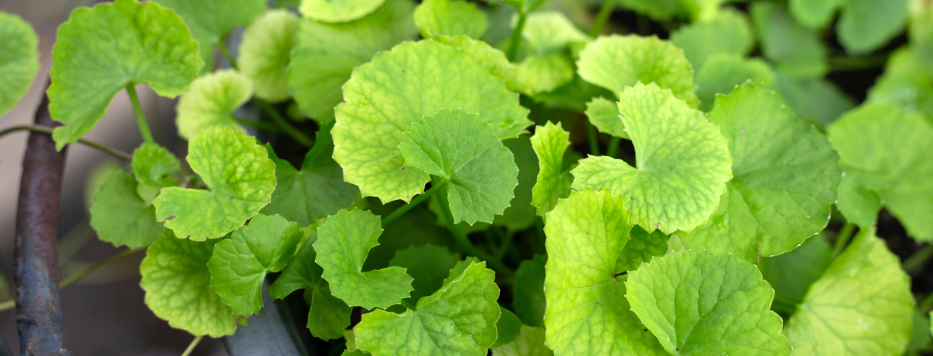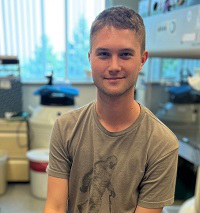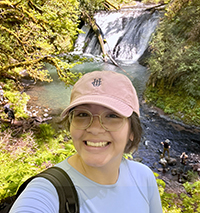Nora Gray Lab

Identifying new treatments for aging and neurodegenerative disease
Many factors contribute to the decline in brain health seen in aging and neurodegenerative diseases like Alzheimer's disease and Parkinson's. These factors include mitochondrial dysfunction, oxidative stress and neuroinflammation.
At OHSU’s Gray Lab, we study therapies that may address these factors. Our goal is to find new treatments to improve brain health or slow the progression of neurodegenerative diseases. We use mice in our research to identify biological or synthetic compounds that may someday treat Alzheimer's disease or Parkinson's disease.
We partner with OHSU's Botanicals Enhancing Neurological and Functional Resilience in Aging (BENFRA) Center.
On this page you can:
Research projects
The Gray Lab uses mouse models to study botanical and drug treatments of neurodegenerative disease. We are also looking closely at the NRF2 protein and how its loss might lead to conditions like Alzheimer’s disease and Parkinson’s disease.
Botanical treatments for aging and neurodegenerative disease

Centella asiatica (L) Urban (sometimes called "gotu kola") is used in Ayurvedic and traditional Chinese medicine to boost memory and improve mental function. Our studies have found that a water extract of this plant improves learning, memory, and executive function in older mice and mice with biomarkers of Alzheimer’s disease. We are currently looking for the most effective dosage for this extract. We also use brain imaging technology to study the extract's effects on beta-amyloid plaques in the brains of mice.
Withania somnifera (also called ashwagandha) is a medicinal plant used in Ayurvedic medicine as a rejuvenating herb. It is also a popular dietary supplement taken to improve sleep, anxiety, and brain function. We are studying mice that produce higher levels of beta-amyloid, the protein that forms brain plaques in people with Alzheimer's disease, to determine the effects of ashwagandha on memory and depression.
Gardenin A is a chemical compound found in the gum of Gardenia resinifera Roth, a small tree that grows in India. In fruit fly studies, our partners at the University of Alabama identified Gardenin A as a compound that may help prevent Parkinson’s disease. We are evaluating the compound's effects on mice that produce higher levels of alpha-synuclein, one of the biomarkers of Parkinson's disease. We have observed that Gardenin A affects mobility and cognitive function and are looking for the biological mechanism that explains how this happens.
Sob-AM2: A drug that may treat neurodegenerative disease
We are working with Thomas Scanlan, Ph.D., to evaluate Sob-AM2. This chemical compound activates the TREM2 protein in the immune system. We are studying the effects of Sob-AM2 on cognition and Alzheimer's disease symptoms in mice. We are also using RNA sequencing to examine Sob-AM2's effects on microglial cells to make sure there are no harmful side effects.
Bench to bedside treatments that target the NRF2 protein
The NRF2 protein helps control levels of antioxidants in our bodies. Our work has shown that the loss of NRF2 speeds up age-related cognitive decline and mitochondrial dysfunction. We are developing novel mouse strains to learn if the loss of NRF2 helps Alzheimer’s disease and Parkinson’s disease progress. We are also studying whether blood levels of NRF2 are useful as a biomarker of Alzheimer’s disease, Parkinson’s disease or multiple sclerosis.
Publications
Find more publications by Dr. Nora Gray on PubMed.
Peripheral blood DNA methylation changes in response to Centella asiatica treatment in aged mice
Biology 2025
Monestime O, Davis BA, Layman C, Wheeler KJ, Hack W, Zweig JA, Soumyanath A, Carbone L, Gray NE
Multi-omics analysis in mouse primary cortical neurons reveals complex positive and negative biological interactions between constituent compounds in Centella asiatica
Pharmaceuticals 2025
Chamberlin SR, Zweig J, Neff C, Marney L, Choi J, Yang L, Maier CS, Soumyanath A, McWeeney, Gray NE
The CD74 inhibitor DRhQ improves cognition and mitochondrial function in 5xFAD mouse model of Aβ accumulation
Metabolic Brain Disease 2025
Gladen-Kolarsky N, Neff CJ, Hack W, Brandes MS, Wiedrick J, Meza-Romero R, Lockwood DR, Quinn JF, Offner H, Vandenbark AA, Gray NE
People
The Gray Lab is led by Nora Gray, Ph.D., a neuroscientist and expert in both complementary and alternative medicine and neurodegenerative disorders. Together with her research team, she uses animal and cell culture models to study how botanicals and conventional drugs might treat cognitive decline.
In alignment with OHSU, the Gray Lab values and supports diversity. We honor, respect, embrace and value all employees, patients, students and volunteers regardless of age, color, culture, disability, ethnicity, gender identity or expression, marital status, national origin, race, religion, sex, sexual orientation and socioeconomic status.
-
-
Appointments and titles
- Associate Professor of Neurology, School of Medicine
-
Areas of interest
- Aging
- Alzheimer's disease
- Cognitive function
- Complementary and alternative medicine
-
Sam Varada, senior research assistant

Sam Varada holds a B.S. and M.S. in microbiology from Oregon State University. Her research interests include the effects of gut microbes and other alternative medical treatments on the brain. In the Gray Lab, she has worked on projects related to conventional and botanical therapies. Outside the lab, Varada enjoys disc golf and hiking.
Noah Gladen-Kolarsky, research assistant

Noah Gladen-Kolarsky holds a B.S. in biology from the University of Denver. He worked with patients diagnosed with neurodegenerative illness before joining the Gray Lab. In the lab, he works on projects to evaluate potential Alzheimer’s disease and Parkinson’s disease therapies in mouse models. Outside the lab, he enjoys camping, reading and hockey.
Wyatt Hack, research assistant

Wyatt Hack holds an A.S. from Portland Community College and started at OHSU as an intern in the lab of Dr. John Crabbe, now retired. In the Gray Lab, she works on projects studying the use of botanical treatments in neurodegenerative disease. Her hobbies outside the lab include reading, writing, and listening to podcasts.
Gisselle Jimenez, graduate student

Gisselle Jimenez holds a B.S. in Neurobiology from UC Irvine. She is a PhD student in the Neuroscience Graduate Program. Her research interests center around microglia and neurodegeneration. In the Gray Lab, she studies novel therapeutics aimed at improving outcomes in Alzheimer’s disease. Outside the lab, she enjoys paddleboarding, spending time with her dog, and watching horror movies.
Lucas Kuhnau, research assistant

Lucas Kuhnau holds a B.S. in cognitive and behavioral neuroscience with a minor in biology from UC San Diego. In the Gray Lab, he supports projects studying the use of botanical treatments in mouse models of neurodegenerative disease. Outside the lab, Kuhnau enjoys cooking, sudoku, basketball, playing guitar, and playing with his cat, Gary.
Lab alumni
Olivia Monestime, B.S. (EXITO researcher, 2022-2023, and research assistant, 2023-2024)
Next position: specimen processing specialist at OHSU
Steve Chamberlin, N.D., MOTH, M.S. (post-doctoral researcher, 2021–2023)
Next position: K08 recipient at OHSU
Alex Speers, N.D., M.S. (post-doctoral researcher, 2020–2023)
Next position: KL2 recipient at OHSU
Cody Neff, B.S. (research assistant, 2022–2023)
Next position: sales associate at Aflac
Jon Zweig, B.S. (senior research assistant, 2017–2022)
Next position: senior research associate at OHSU
Mikah Brandes, B.S. (EXITO researcher, 2018–2020, and research assistant, 2021–2022)
Next position: manufacturing associate at Twist Bioscience
Contact us

Join us
Email grayn@ohsu.edu to learn how to join the lab as a:
- Post-doctoral fellow
- Graduate student
- Research assistant